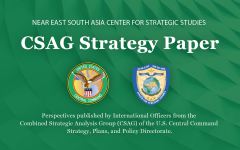China’s Territorial Ambition in Central Asia
February 4, 2021 2021-02-04 16:28China’s Territorial Ambition in Central Asia
China’s Territorial Ambition in Central Asia
By MAJ Naoki Tajiri, Japan Ground Self-Defense Force, US Central Command: Strategy Plans and Policy Directorate; Combined Strategic Analysis Group
4 Feb 2021
Introduction:
The COVID-19 pandemic has restarted China’s revisionism along with their ambition of territorial expansion and accelerated their long-term plans. After World War II, China advanced westward and invaded Tibet in 1948 and Xinjiang in 1949. China has steadily expanded its territory not only towards immediate neighbors, but also to distant countries. In recent years, China’s operations in the South China Sea, around Taiwan and on the Doklam Plateau have been framed within the regime’s storyline of China overcoming the “century of humiliation.” These operations have been designed to restore its rightful place as the predominant power based on the mindset that China is at the cultural and political center of the world.
Key Points:
- China’s historic and aggressive territorial ambitions have re-emerged across Asia and into Central Asian States (CAS).
- The Chinese regime is trying to regain territory taken by 19th century Western powers equivalent in size to the Qing Dynasty.
- China considers CAS as its “rear area” and is willing to challenge the sovereignty of CAS nations to achieve its objectives.
- Some CAS countries are afraid that this behavior is leading to China amending the border agreements of 1997.
- The militarization and deployment of the People’s Armed Police (PAP) inside and around borders projects an aggressive policy rooted in radical nationalism (chauvinism), land exploitation, and labor migration.
- In January 2021 the Chinese government implemented a new Defense Law which authorizes military force when development interests are at risk and authorizes the mobilization of Chinese nationals in a threatened area to defend it.
The opinions and conclusions expressed herein are those of a number of international officers within the Combined Strategic Analysis Group (CSAG) and do not necessarily reflect the views of United States Central Command, not of the nations represented within the CSAG or any other governmental agency.






